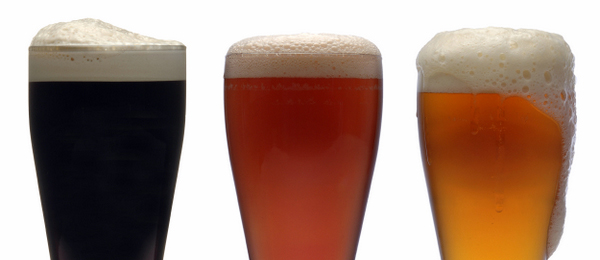
Stop me if you've heard this one...

But what is craft beer? Yeah, yeah, I know, I know, we’ve discussed this. It has been written about in this very corner of the interwebs and picked apart specifically on the second episode of Radio Brews News. In addition, it has been argued about over pots in Melbourne pubs, it has been sliced up over schooners in Sydney clubs and untangled over ‘Tens’ in Tasmanian taverns.
Is it really that difficult to define? It’s beer, remember – not wine. It’s not meant to be taken too seriously, is it? It’s sociable and approachable and generally unpretentious and all-welcoming. It’s made by brewers for drinkers and you either like the taste or you don’t. It is represented by a myriad of styles yet it seems to serve a single purpose – to bring people together.
Craft beer is a term that has gained traction in the vernacular over the last five years or so and has probably grown out of what we used to refer to as ‘boutique’ then ‘micobrewed’ beer. ‘Boutique’ was properly reserved for small shops selling women’s clothes and ‘micro’ was a term that appeared constricting – we all know size isn’t everything, don’t we?
‘Craft’ as a descriptor just seemed to sum up the key issue – the beer in the glass. It set this type of beer aside from that made by suburb-sized machines controlled by flashing computer panels and sent to packaging lines by robots to end up stacked ten-high in beer barns at ‘2 slabs for $70’ – ‘mainstream’ beer, if you will. Craft beer came to denote a beer that was made with the drinker in mind rather than the shareholder alone and was brewed up to a standard, not down to a price. But it was about the beer.
The issue of a conclusive definition of what ‘craft’ beer is has been raised again with the formation of Craft Beer Limited, a national association of brewers charged with fostering and promoting good beer around the country. It seems that, for some, it’s not the beer that is of paramount concern, but business economics and politics. Craft beer is being arbitrarily divided into sub-camps of ‘real’ and ‘fake’ craft beers depending not on the quality or provenance of the beer in the barrel but by the bums-on-seats in the Boardroom. There is a feeling in some quarters that who pours the money into the business is more relevant than what is actually poured from the bottle.
Based on these assumptions, Matilda Bay, Malt Shovel Brewery, Little Creatures and Stone & Wood do not brew craft beer of any sort and should not be welcome in a Craft Beer Association. Presumably any other brewer, who draws any investment from any source which is not a bona fide craft brewer would, similarly be excluded. Arguments about volume also creep in with brewers allowed nominal outputs before they, too are kicked off the team.
I mean in no way to simplify the arguments for either side, nor do I wish to downplay the value of the opinion of those who can’t see the beer for the business model but let’s sort a few things out.
How do we define craft beer? Why does it matter to the end product that someone other than the brewer pays the bills? If a brewer makes a ‘craft volume’ of beer it can be called ‘craft’ but if it is so good he sells ‘too much’ the same beer is no longer ‘craft’. If the bloke who pays the bills and signs the cheques really that important to the definition then what is the alternative? Because, make no mistake; beer needs a body. It needs a voice. It needs unity and strength and focus. Just like wine has.
It needs people writing nice things about it and needs converts to its wonders to have a means of having their questions answered and their pathways pointed out. The CBL just might offer these. What beer probably doesn’t need are well-meaning individuals shining spotlights on issues that, in the end, don’t affect the quality of the beer.
So let’s get the conversation started. Again. Right here, right now.
Please respond politely in 25 words or less. More paper is available upon request.
[adrotate group=”1″]



